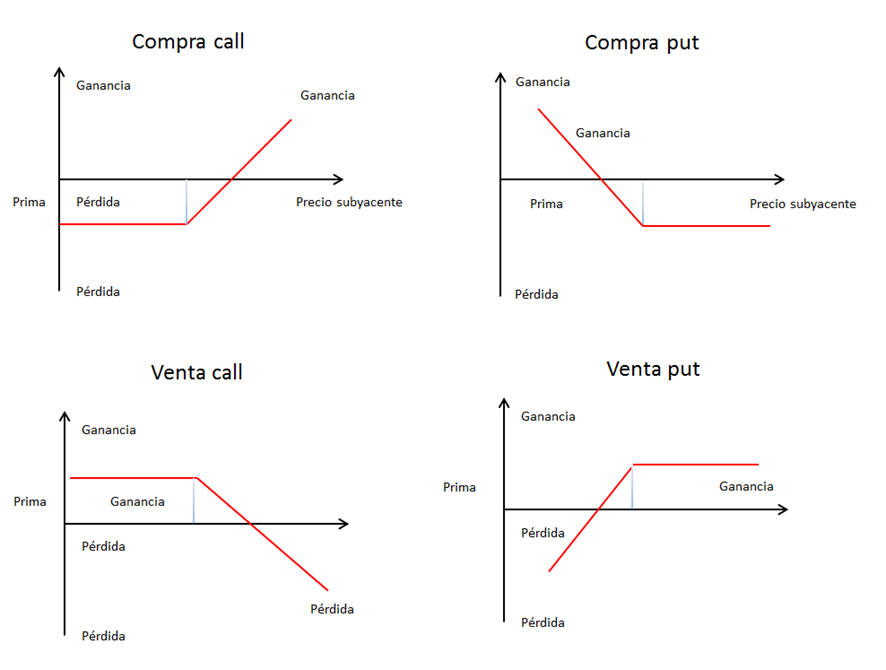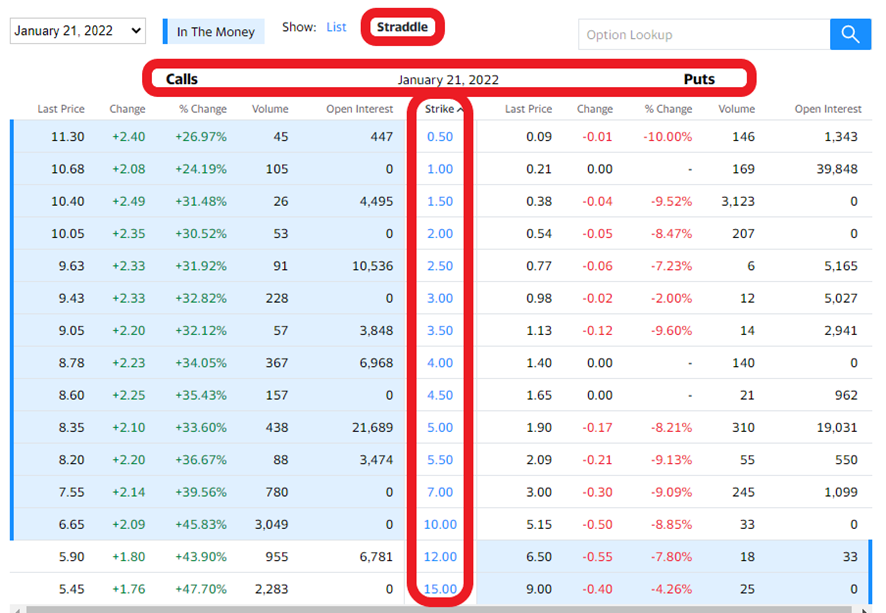Financial Options
Financial options are a versatile tool for investing and managing risks.risk. While they may seem complex at first, understanding their fundamentals can open up a world of possibilities. This article will explain the basics of financial options, their types, and common strategies.
🔹
1.
What Are Financial Options?
Options are financial contracts that givegrant the holder the right (but not the obligation) to buy or sell an asset at a predetermined price within a specific period. The two main types of options are call options and put options.options.
Call and Put Options
- Call
OptionsOptions::Grant the right to buy an asset at a specific price (strike price) before the contract expires. - Put
OptionsOptions::Grant the right to sell an asset at a specific price before the contract expires.
Contract Sizes
Options are traded in standard contract sizes. For example, in the stock market, anone optionsoption contract typically represents 100 shares of the underlying asset.
Types of Contracts: European and American
- European
OptionsOptions::Can only be exercised on the expiration date. - American
OptionsOptions::Can be exercised at any time before the expiration date.
The flexibility of American options makes them more popular in certain markets, althoughwhile European options are commoncommonly used for index options.
🔹 2. Buying and Selling Options
- Buying
CallsCalls::You expect the price of the underlying asset to rise. If the price exceeds the strike price, you can buy the asset at a lower price. - Buying
PutsPuts::You expect the price of the underlying asset tofall.drop. If the pricedropsfalls below the strike price, you can sell the asset at a higher price.
SellingCoveredCallsCall Selling::You own the underlying asset and sell call options on it, earning the premium while limitingupsideprofit potential.SellingUncoveredNaked(Naked)CallsCall Selling::You sell call options without owning the underlying asset. This strategy is risky, as losses can be unlimited if the price rises sharply.SellingPutPutsSelling::You sell put options, betting that the price will not fall below the strike price. If it does, you mayneedhave topurchasebuy the asset at the strike price.
🔹
3. Financial Options Chain
The options chain
The options chain is a visual tool that organizes andsystematically displays all relevant information about the available options for an underlying asset at a given time. It is a table or list that detailsdetailing the strike prices and data for both call and put options associated with each price.
What Information Does the Options Chain Include?Contain?
Each row in the options chain corresponds to a strike price, while the columns containinclude key data about call and put options. Here’s what you’llyou typically find:
- Strike
PricePrice::The price at which the option buyerof the optionhas the right to buy (call) or sell (put) the underlying asset. - Premium (Option Price):
:The current cost of buying the call or put option.ThisIt varies based on factorslikesuch as volatility and timeuntilto expiration. - Volume: The number of contracts traded during the current session.
- Open Interest: The total number of open contracts that have not yet been closed or settled.
- Expiration Date: The date
whenthe option expires. - Implied Volatility: An estimate of the
underlying asset'sfuture volatility of the underlying asset based on theoption’soption price. - Delta, Gamma, Theta, Vega, and Rho (The Greeks): Indicators that show how the
option’soption price is expected to change in response to various factors, such as changes in the underlyingasset’asset's price, time decay, or interest rates.
How Is the Options Chain Used?
The options chain is essential for investors and traders because it allows them to:
Evaluate Strategies:Compare option prices to decide whether to buy or sell calls or puts and at which strike price.Identify Market Trends:Analyze volume and open interest to see which options are being actively traded.Calculate Profitability:Determine the cost and potential profit or loss of an options trade.Adjust Trades:Plan complex strategies, such as spreads or combinations of calls and puts, with different strike prices or expiration dates.
Simplified Example of an Options Chain
Suppose you’reyou lookingare atviewing the options chain for a stock trading at $100. You might see something like this:
|
|
|
|
|
|||||
$95 |
$6 |
$1 |
1,000 |
500 |
|||||
$100 |
$3 |
$3 |
2,500 |
1,800 |
|||||
$105 |
$1 |
$6 |
1,200 |
700 |
This example shows the premiumspurchase prices (premiums) for buying call and put options at three different strike prices, along with the open interest.
🔹
4.Real example of an Options chain
🔹 5. The Greeks: Measuring Option Risks in Options
The "Greeks" are mathematical tools used to measure the risks associated with options. Each Greek represents a specific factor that affectsaffecting an option’s price:
DeltaDelta::Measures how much the option priceof the optionwill change for a $1 change in theprice of theunderlying asset.For example, if an option has a Delta of 0.5 and the underlying asset increases by $1, the option’s price will increase by $0.50.GammaGamma::Measures the rate of change of Delta for a $1 change in theprice of theunderlying asset.For example, if the Gamma is 0.1, a $1 increase in the asset’s price will raise the Delta from 0.5 to 0.6.ThetaTheta::Measures the rate at whichthean option loses valueasoverexpiration approachestime (time decay).For example, if Theta is -0.02, the option loses $0.02 per day due to time passing, assuming other factors remain constant.VegaVega::Measures sensitivity to changes in market volatility.For example, if Vega is 0.1, a 1% increase in market volatility will increase the option’s price by $0.10.RhoRho::Measures sensitivity to changes in interest rates.For example, if Rho is 0.05, a 1% increase in interest rates will increase the option’s price by $0.05. The underlying asset, which can be a stock, index, or commodity, directly influences how this metric behaves under various market conditions.
🔹
6. Common Options Strategies with Options
Options offer a wide range of strategies, from simple to complex:
- Protective
PutPut::Buying a put option to protect against a potentialdeclinedrop in the price of an asset you own. - Covered
CallCall::Selling a call option whileowningholding the underlying asset to generate additional income. StraddleStraddle::Buying both a call and a put option with the same strike price and expiration toprofittakefromadvantage of significant price movements in either direction.- Iron
CondorCondor::Combining multiple call and put options to profit in low-volatility markets. - Butterfly
SpreadSpread::Using multiple strike prices to limit risk and maximize potentialprofitsgains within a specific price range.
🔹 7. What Are LEAPS Options?
LEAPS (Long-Term Equity Anticipation Securities) are call or put options with extended expirations, typically ranging from one to three years. These options allow investors to speculate on an asset’s future price or hedge against adverse portfolio movements with greater time flexibility.
GlossaryExample:
An investor who believes Apple (AAPL) stock will rise significantly over the next two years could buy a LEAPS call option instead of Termspurchasing the stock directly, gaining exposure to price movements with a lower initial investment.
🔹 7.1. Key Features of LEAPS Options
StrikeLongPriceDuration::TheUnlikepredeterminedstandardpriceoptionsatthatwhichexpiretheinoptionacanfewbemonths,exercised.LEAPS have longer expiration periods.ExpirationLowerDateTime Decay::TheLEAPSdateexperiencewhenlessthetimeoptiondecaycontractthanexpires.short-term options.UnderlyingHigherAssetPremium Costs::TheDue to the extended expiration, LEAPS tend to have a higher premium.- More Stable Market Sensitivity: LEAPS reflect price movements more steadily over time.
- LEAPS Call Option: Grants the buyer the right to buy the underlying asset
thatatunderpinsa specific price before expiration. - LEAPS Put Option: Grants the
option,buyersuchtheasright to sell the underlying asset at astock,specificindex,priceorbeforecommodity,expiration.
🔹 7.2. How Do LEAPS Options Work?
LEAPS operate similarly to standard options:
🔹 affects7.3. itsPros performanceand underCons variousof LEAPS Options
✅ Advantages
✔ Slower Time Decay
✔ Ideal for Long-Term Investing
✔ Less Immediate Volatility
✔ Lower Risk of Total Loss
❌ Disadvantages
✖ Higher Premium Cost
✖ Long-Term Commitment
✖ Less Liquidity
🔹 7.4. Investment Strategies with LEAPS
📌 Stock Substitution with LEAPS Calls
Instead of buying shares, investors can purchase LEAPS call options for exposure with a lower investment.
📌 Hedging with LEAPS Puts
Investors can buy LEAPS put options to protect their portfolios from long-term market conditions.downturns.
📌 Selling LEAPS for Income
Investors can sell out-of-the-money LEAPS options to collect premiums.
Understanding financial options can provide investors with powerful tools for speculation, income generation, and risk management.


